| | Subtitle:
Has the Human Brain been designed to Understand Reality?
A revolution in thinking solves the main philosophical questions.
The book by Arndt-Michael Meyer has been available from the beginning of April 2004 - ISBN 3-9809414-0X at Tando Verlag.
Comment by the author:
The reason why the only realistic general theory of philosophy, the GUToP (Great Unified Theory of Philosophy), has not been discovered earlier seems eccentric at first, but it becomes quite clear once we understand the complex system in which such a theory has to grow.
1st
Most of the scientists today already know or feel that the world works exactly as the GUToP describes. However, the single scientist is usually almost exclusively involved in his specific field of expertise. Anything beyond his speciality will usually be left to colleagues. However, for the creation of a complete theory, one brain has to arrive at grasping the whole picture. It is almost not possible to develop such a theory when the required knowledge is distributed in several brains.
2nd
The complexity of the GUToP is not only given by the high complexity of each single section, but also by the great number of single sections. Each section requires the detailed knowledge of a different science. Examples of involved sciences are neural networks, evolution, biology, system theory, maths, logic, physics, religion, sociology and psychology.
3rd
The brain invents “facts”, unconsciously for the owner of the brain, according to its emotional desires when it is confronted with a question to which it does not know the answer. These emotional desires largely depend on the situation of the owner of this brain as a human social being. There is hardly any escape from those human constraints. Those human constraints alter the "personal reality" of the owner of the brain. This mechanism makes it impossible to develop an unbiased view of the world.
Who would be able to come up with such a global theory?
Could it be an expert or scientist?
It is very unlikely that a scientist after many years of working in one field decides that he should move into several other scientific fields. He would have to start all over when addressing the new scientific field. He would loose all his benefits and start all over being a simple student. This is highly unlikely to happen to a professional who earns his money and reputation on profound knowledge. What should be his motivation to go through another 5 to 10 years of being a "student"?
Could it be a normal person who does not work in the philosophical field?
This is also very unlikely. The complexity of the GUToP is almost impossible to handle for a “spare-time philosopher”. A private person will have neither the time, nor the independence, nor the wealth nor the social situation to finalise his thoughts. However, most of all he will not see a necessarily to “violate” or “overload” his brain to research for decades and finally to come up with a global theory of the world.
Could it be a philosopher?
This is even more unlikely. A philosopher decided to become a philosopher because his brain likes to deal with unsolvable concepts. He will usually be the born expert for “non pragmatic” working. After having spent many years in his scientific or pseudo scientific environment, he will not have the skills required for the profound understanding of hard sciences. Besides that, he will usually not work in an open-minded environment nor have the independence in his thinking to come up with a realistic global theory about everything.
The author had a very atypical opportunity to develop knowledge in all the required fields. The external constrains given by his environment encouraged his brain to develop into an "unbiased neural network". Beneficial was an almost complete economical as well as an emotional independence. This in combination with a natural urge for harmony, especially concerning matching information and justice, allowed the GUToP to mature over a period of two decades.
The advantage the reader has is that the GUToP is being presented in a condensed form. The book will allow the reader to create the necessary associations within some months or years instead of decades. It will be hard, but nobody ever said that studying is easy. This book is NOT a novel!
Please be aware that the understanding of the GUToP will not be a “sequential” accumulation of pieces of information. It will require a modification of most of the already existing “non realistic” associations into “realistic” associations representing the complex system in which we live, the “universe”.
I am not able to predict whether the result will be beneficial to the single reader. Most probably, the GUToP will hurt many basic human emotions. In case the brain opposes to allow the “modifications into realistic associations”, success will NOT be possible.
Nevertheless, the author predicts that within the next 5 years the GUToP will be the dominating approach to reasoning for humans, which are able to unlink their emotional desires from information. The unlinking of emotional desires from information is the most important prerequisite for finding universal truth.
Preface
This book sums up all the important things a human wants to know about the universe, nature and his own life. Initially this task seems impossible to be done, in particular not in such a short book. However, we will see that it is perfectly possible.
The reason for this success lies in the nature of human thinking and the way in which complex systems like any system in our close or far environment need to be described.
Nobody will ever be able to describe even the simplest complex system in all its details. However, what a human brain intuitively and perfectly does is to build a picture of every system its encounters. No matter how hard we try, when building the picture we will always seek for more details. However, all we need to know to build a “valid” picture inside our brain is the accuracy of each single piece of information we keep in our brain.
Initially our picture will be based on vague information. Important is that we know that we build our picture based on vague information. To improve the clarity of our picture we just add more and more information together with the awareness of the level of accuracy of this additional information.
This book allows everybody to “see” a perfectly clear initial picture. Once this picture will be visible, we will be able to increase its accuracy step by step. Even an insignificant increase in quality of a single piece of information could however require hundreds of additional hours of reading and studying.
Therefore going into such detail does only make sense for specific pieces of information in which the single reader is particularly interested. An important fact is that none of these specific pieces of information will ever be known beyond certain accuracy. Knowing this, the reader should rather try to get the whole picture right, than trying in vain to reach perfection in a few single piece of information.
The GUToP (Great Unified Theory of Philosophy) will show how everything humans experience in their lives fits together. On the theoretical side, it will show the questions, which are still open, and the questions, which will stay open forever. On the practical side, the GUToP will allow humans to improve the accuracy attached to knowledge in a continuous way. For the first time in history, philosophy will not be running in circles, but is able to improve continuously, in order to reach the maximum level of accuracy possible for each question. This achievement can be made independently from a definite knowledge about the composition of the universe.
An important part of the GUToP is to show, how humans work or better how our brains work, why our brains work the way they work and what consequences this has for our human life.
However, please watch out. The truth could hurt!
In most cases, our brain will protect us from getting hurt. The fulfilment of emotional desires dictated by our brain will filter any information accordingly.
From experience, I would predict that less than 10% of educated people would be able to understand and accept the theory described in this book. This number will obviously strongly depend on the type of person and their associated state of the brain. The likelihood is quite high that most people will remain caught inside their BraiTrix.
The natural behaviour caused by our brains is that we will only partially accept a new theory. The parts we accept just happen to fit our current understanding of the world. We have no problem integrating matching pieces of information into our own personal view of the world. If the information does not match, the brain will alter or discard it.
Human thinking roughly follows the following scheme:
• “Universe” is about dead matter
• “Nature” is about living matter
• “Human” is about spiritual matters
I will show that the three subjects: “universe, nature and human” are very much interrelated and that all three subjects follow the same mechanism.
One of the most important questions is why different people see things differently. Therefore, this question will be a large part of this theory. The GUToP will allow analysing, classifying and understanding all our questions.
During our journey towards the universal truth, a new word is needed and is being defined. Questions like whether we have a free will, what the concept of dying means, what the sense of life is and many others are being answered.
The GUToP will change the way we see ethical questions. Therefore, it will eventually have quite some impact on society. This impact however will be very slow. If ever, it will take several generations for the masses to understand and accept the GUToP.
Max Planck already said, “A new theory never triumphs. Only the people sticking to the old theory will eventually die”.
[229 pages removed]
Summary:
For more than 20 years, the “Grand Unified Theory of Philosophy” has matured and has become clearer and clearer. The goal of the GUToP is to integrate all existing theories about the universe into one single concept. The GUToP analyses and defines the reasons why all other theories exist.
The GUToP shows that the human brain has been designed to be trapped in its ancient way of thinking. Although we believe that with our high education we succeed in opening our eyes, this book will show that the environment we live in is so full of “traps” that there is almost no possibility to escape. The brain is constantly being tricked and most of the time trapped without any hope for escape.
The title of the book therefore is “The BraiTrix Trap”.
However, the real strength of the GUToP lies in its asymptotical approach of improving human knowledge leading to the absolute truth. This book will help to arrive at that goal.
The book brings forward all the important questions, which come up during a human life. Questions like what is the sense of life, what is happiness, what is the 6th sense, how do we think, what is perfection in human life and many others are being analysed, classified and finally answered.
Almost all human brains are limiting themselves using their “inborn” approach to thinking. Humans still uncritically accept their “animalistic” thinking strategy instead of using a combination of rational collection of information and the powerful intuitive reasoning of the brain.
Our brain has been optimised for survival in nature. If our goal is the search for the absolute truth, without external assistance, our brain will completely fail. The GUToP offers this required “assistance”. The resulting “truly human” approach to thinking will allow us to rise above all parts of our environment and fully understand them. However, only if we desire to have a glance at that divine picture from above.
Author
Arndt-Michael Meyer has been born in Karlsruhe/Germany in 1963. He has researched philosophical questions from the age of 20. Arndt holds a Master Degree in Computer Science from the University of Karlsruhe.
Arndt has extensively travelled to almost all European countries and has lived in the US, in Italy and in Great Britain for more than 10 years.
Only many thousand hours of frequently controversial discussions have allowed the GUToP to crystallize. The logical consequence has been the creation of this book.
| |
|
| |
| |  |  |  |  | 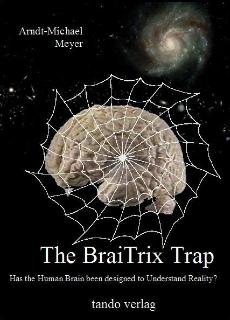
Cover Front | 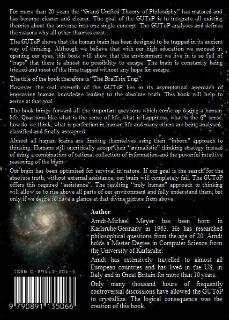
Cover Back | 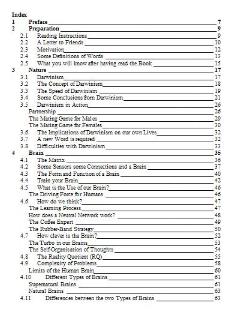
Content 1 | 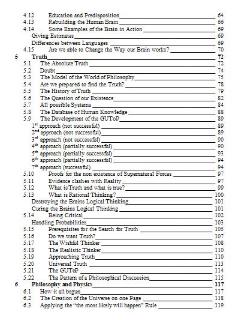
Content 2 | 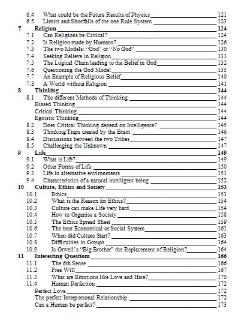
Content 3 | 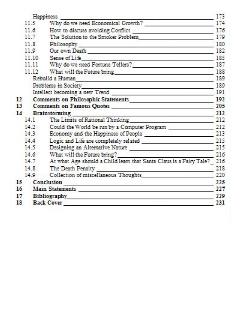
Content 4 | 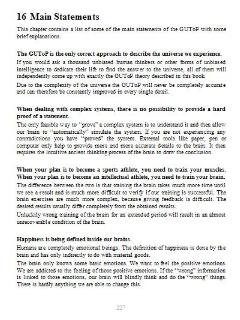
Main Statements 1 | 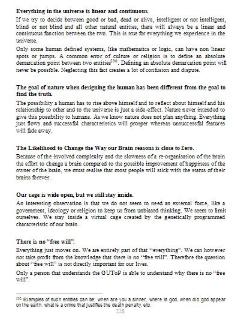
Main Statements 2 | | |
|  |  |  |  |
|